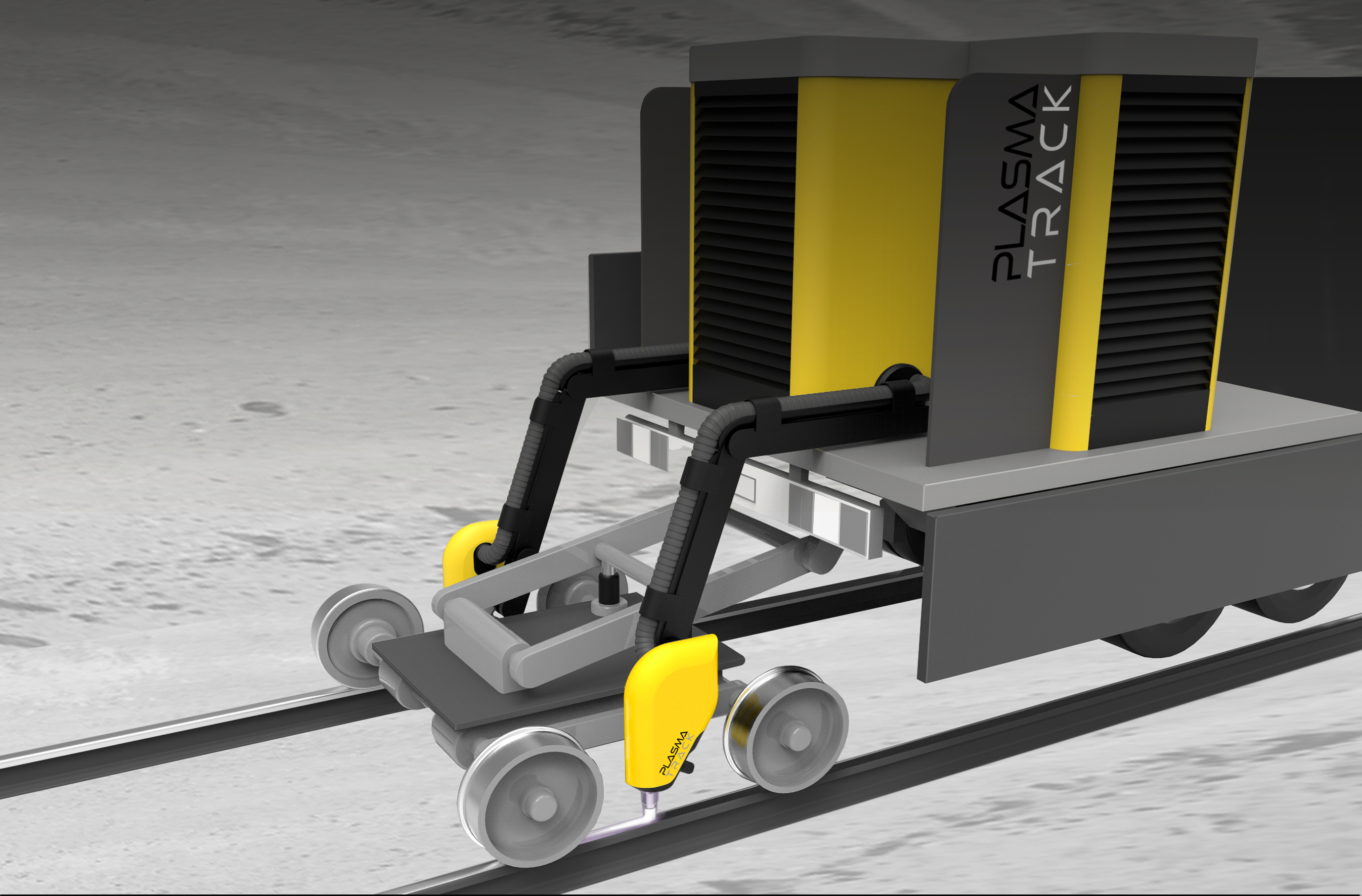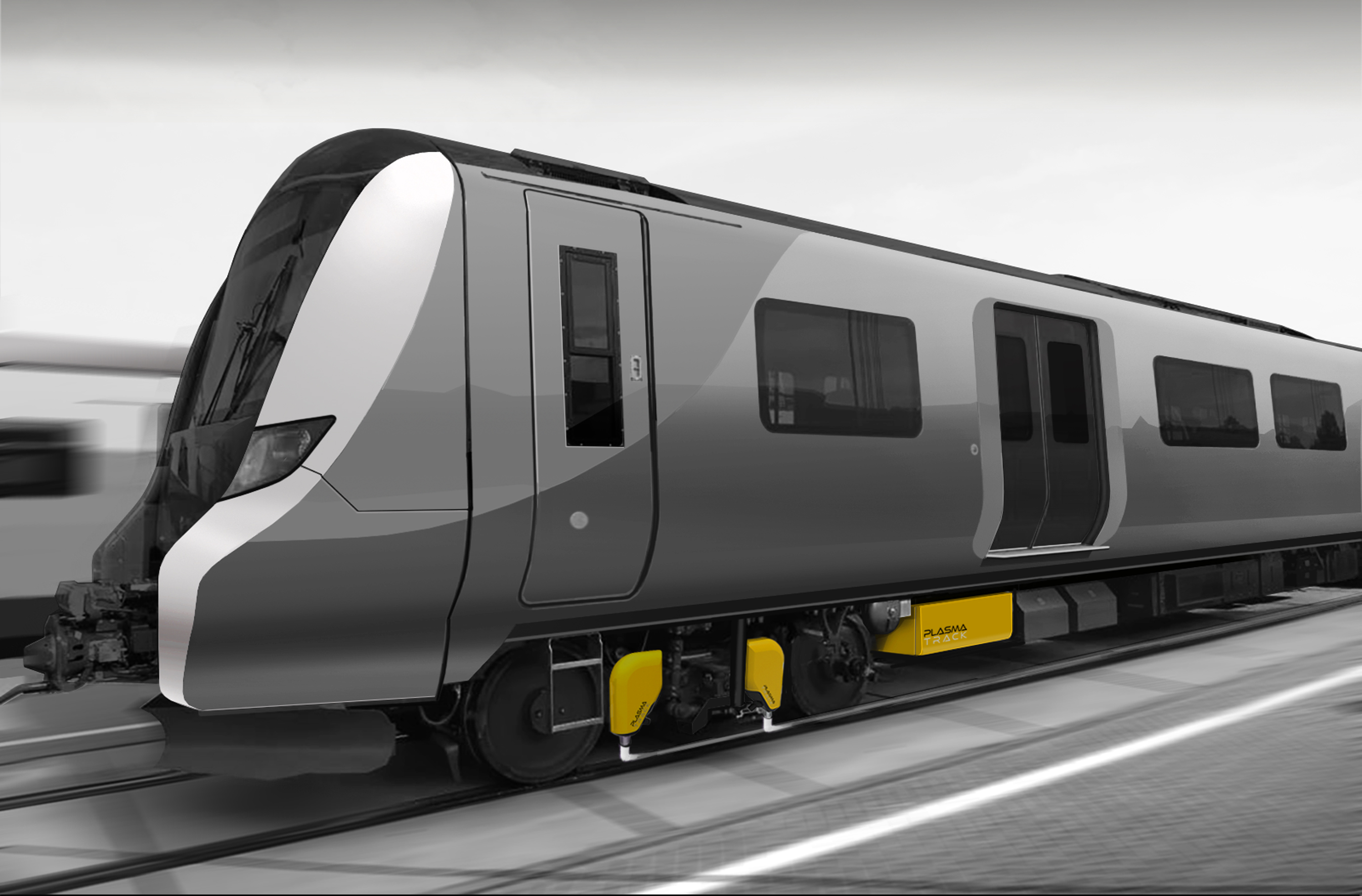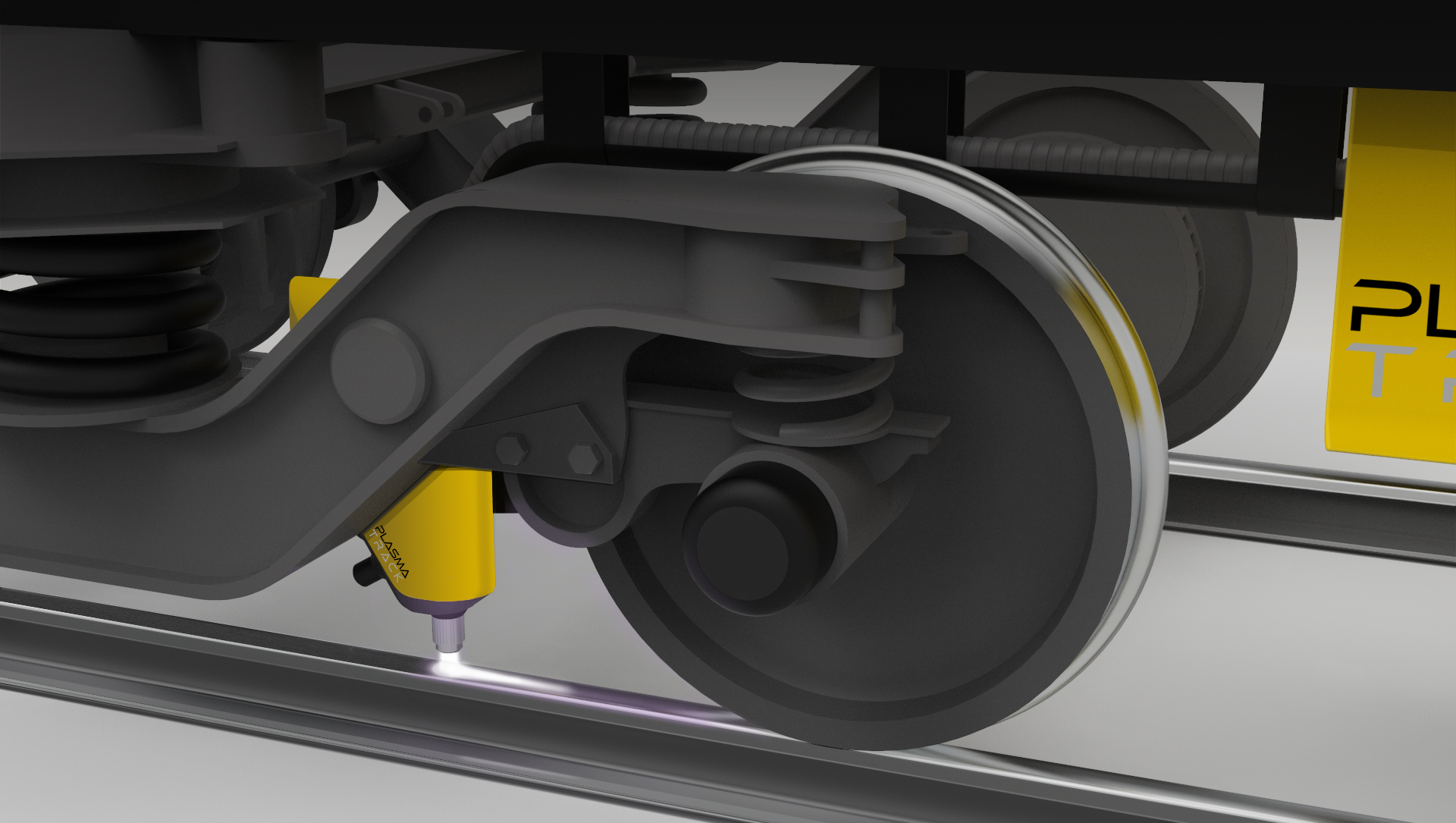‘Leaves on the line’ is a phrase rail passengers have come to dread. Each Autumn this seemingly innocent act of nature is the cause of severe delays and disruption to our railways. So serious is the problem that it costs the industry and wider society around £350 million per year.
The UK’s railways are lined by ten million trees with many of them dropping their leaves all within a two month period. As trains whizz over these leaves, they are compacted down to form a smooth, slippery layer and it’s this teflon-like coating that prevents trains from efficiently braking and pulling away from stations.
Current track cleaning methods involve the frequent use of Rail Head Treatment Trains that blast high pressure water jets on the tracks or, on more rural routes, the use of manual cleaning crews. Both of which are time consuming and require sections of track to be closed, leading to delays and cancellations.
However, London-based start-up PlasmaTrack has a novel solution - to obliterate the slippery coating using what is effectively a light sabre attached to the front of a train, which is powered by a generator either via regenerative braking or spare electricity.
“We’re using direct current (DC) plasma technology which uses heat and active electrons to split things apart, so this high energy electrical plasma beam basically tears apart the leaf layer as well as heating and burning them off,” explains Julian Swan, engineering director of Imagination Factory, a London-based strategic design and engineering company.

AN IDEA FOR A SPIN-OFF
PlasmaTrack Ltd. is a spin-off from Imagination Factory, which together with client work also gets involved in grant-funded innovation and R&D development projects. “We think of Imagination Factory as an incubator for ideas and while we spend 30% of our time working on client projects, the other 70% is spent developing ideas as part of grant funded work, whether that be on our own or part of a collaborative team,” describes Julian.
One such project came about in 2016 when Innovate UK together with the Railway Safety and Standards Board (RSSB) put out an open call for innovators to tackle the challenge of ‘leaves on the line’. Known as the Predictable & Optimised Braking project, research proposals needed to be more effective than the current methods, specifically the use of water jet technology which requires 180 million litres of water per year.
Imagination Factory put in an application to look at microwave systems. It was an idea that had come about years before
through working on an unrelated project but was never pursued. This was their opportunity. However, after some further research and testing they realised pure microwaves weren’t sufficient for the job as they just bounced off of the track. So they turned to microwave plasma, which then, following further development, turned into DC plasma.
It was now four years down the line and a number of prototypes later, with the most recent having been successfully tested on rail tracks in both Scotland and Wales during Autumn 2019. However, in March 2020 the RSSB project had drawn to an end and so too had the funding from Innovate UK. With interest being shown in this DC Plasma technology, particularly from National Rail, both national and regional, Imagination Factory decided to spin out PlasmaTrack as a start-up.
“We kicked it off right at the start of the COVID pandemic. It was a crazy thing to do, but that’s what we do, we do crazy,” laughs Julian.

JOINING THE STARTUPS PROGRAM
Now with the challenge of raising capital, PlasmaTrack were on the look out for any support that could be offered to start-ups to help keep costs down. Through its SOLIDWORKS reseller, Solid Solutions, it came to hear of the 3DEXPERIENCE Works for Startups program, a program aimed at early-stage hardware start-ups that offers software, training and co-marketing resources.
“We’ve been SOLIDWORKS users at Imagination Factory since day one and so we’re very familiar with the software, and through this package we were supplied with the whole suite of tools from concept design, through to engineering analysis and drawing support for manufacturing, to even producing 3D photo realistic renderings and animations.
“However, it wasn’t just the software and the training, which we benefitted greatly from, Solid Solutions also supplied us with the Dell hardware. I shopped around myself for the hardware and Solid Solutions’ prices were better than what I could find anywhere else, and as part of the bundle we got up to five laptops and one desktop computer,” describes Julian.
The first product that PlasmaTrack designed as its own start-up was a low-speed 20-foot working demonstrator that was to be tested on rural tracks in South Wales in Autumn 2020. This testing was sponsored by Network Rail Wales, which was very keen on this technology as currently ten mile sections of track were closed for an entire day for manual cleaning.
"Even though our demonstrator would be only moving at 5mph, that ten mile section would be complete in two hours and it could then move on to another section and then another," says Julian.
During the concept design phase, the design team used SOLIDWORKS to very quickly iterate and try out different variations and layouts. They also used the software to carry out structural engineering simulation to ensure that everything was suitably designed for the expected loads.
However, they didn’t have the skills in-house to carry out computational fluid dynamics (CFD) analysis using SOLIDWORKS Flow Simulation. This was crucial for the design as they needed to analyse the plasma generation, for instance in analysing the airflows and calculating the impact as it moved along the track and any interference that may be coming from the wind or the train’s wheels.
“We got in touch with Solid Solutions’ help desk for advice on what to do in terms of carrying out these simulations and they said that they could run these simulations for us. We weren’t aware that this was even a service they offered and it was far more cost effective than hiring external consultants to do it for us,” says Julian.
With all the iteration and analysis that had been carried out during the design stages, PlasmaTrack was confident that when it shared the manufacturing drawings with its Dudley-based manufacturer Metallisation the final product would work well. And it did. Despite the various challenges posed during COVID, the prototype had been designed, built and loaded onto a truck for testing in South Wales all within six months.

NEXT STEPS
Further development of PlasmaTrack’s technology is gathering pace with two further prototypes being designed for Autumn 2021. One is a smaller version of the low-speed prototype and the second is a high-speed one for use on Network Rail’s busier networks.
“In October we will be proving our technology can do 60mph live on track with Network Rail. This should open the door for Plasmatrack to replace the waterjet systems on all 61 track treatment trains.
However, the goal is for its technology to be used on trains that go a lot faster than that. “Ultimately, we’d like to see our system on every single train that runs up to 110mph and to be used whenever it’s needed. As soon as the brakes are hit, the system will fire up and clean the track in front of the train.
All of the computations, modelling and testing we’ve done as well as all the graphs and data show that it should easily work at that speed,” confirms Julian.
There is understandably a great deal of enthusiasm for the potential of this project, and with customers already lined up and having completed its irst round of seed funding, PlasmaTrack is looking ahead to a bright future.
“It’s certainly been a rollercoaster of a journey bringing a spark of an idea into a working product. We couldn’t have done it without the support of companies like Solid Solutions, which provided the software, hardware, training and everything in between,” says Julian.
MORE CUSTOMER STORIES